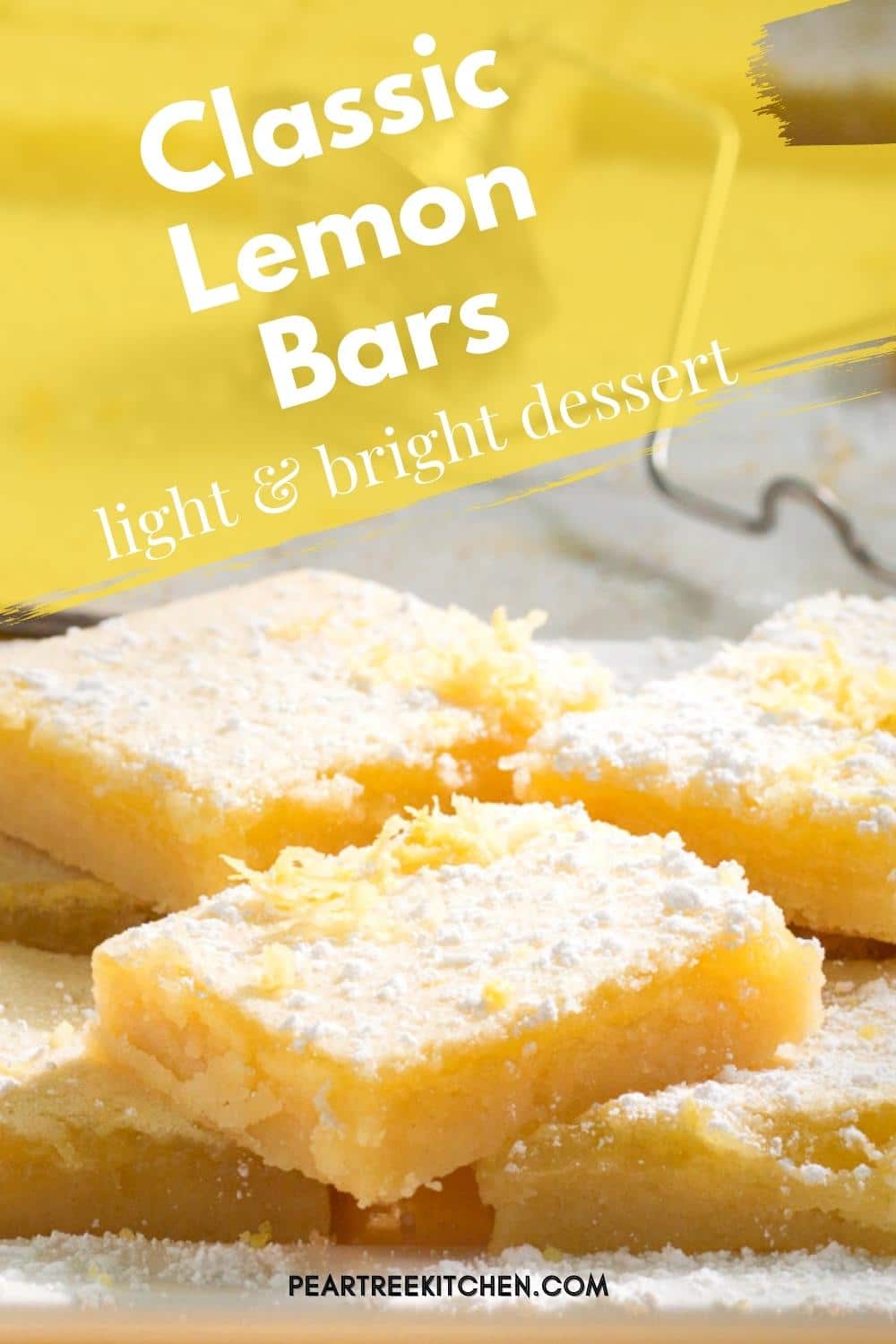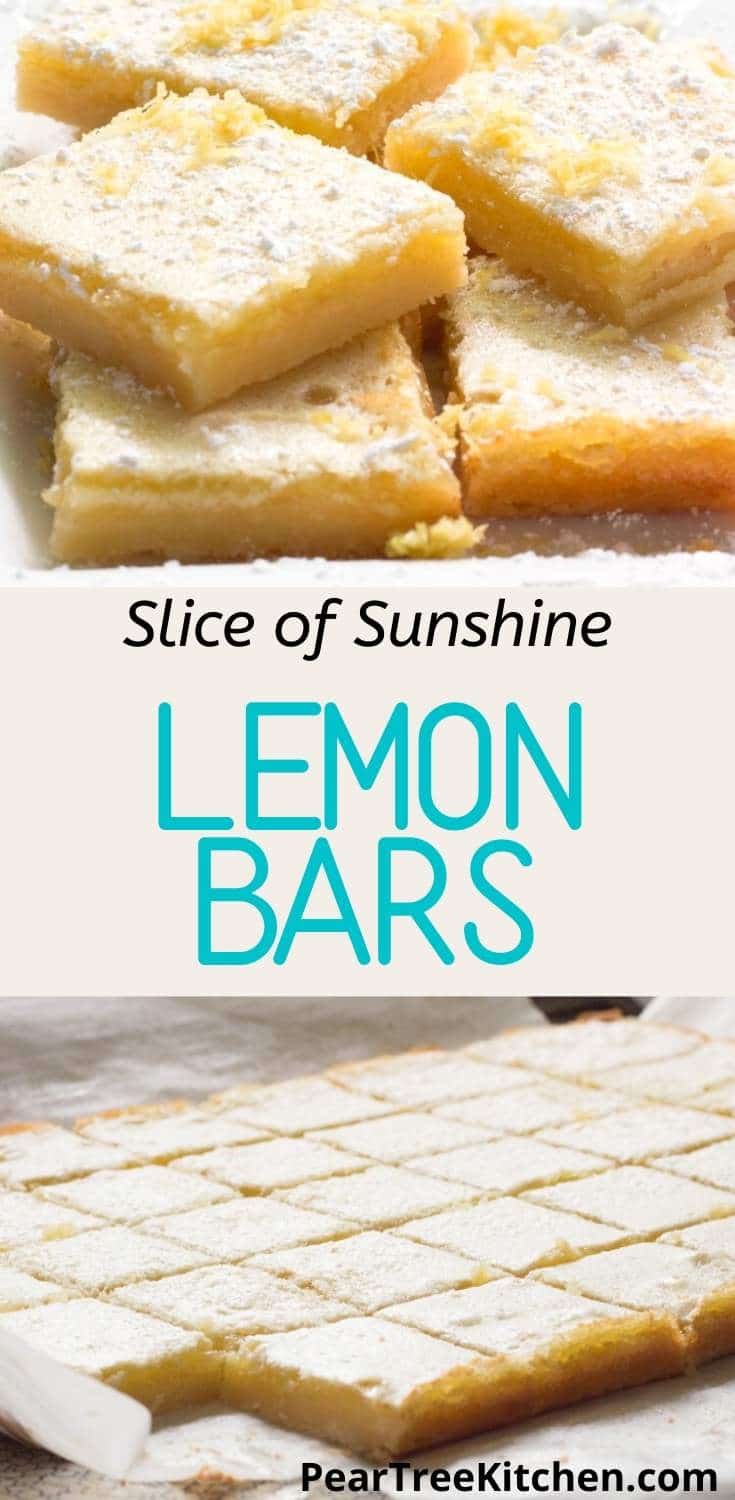Best Lemon Bars with Shortbread Crust
Amazon Associates Disclosure We are a participant in the Amazon Services LLC Associates Program, an affiliate advertising program designed to provide a means for us to earn fees by linking to Amazon.com and affiliated sites.
Easy recipe for the Best Classic Lemon Bars with a Shortbread Crust. A homemade shortbread crust is topped with a simple lemon filling, baked just until set, is perfect for when you want a little burst of sunshine in your mouth.
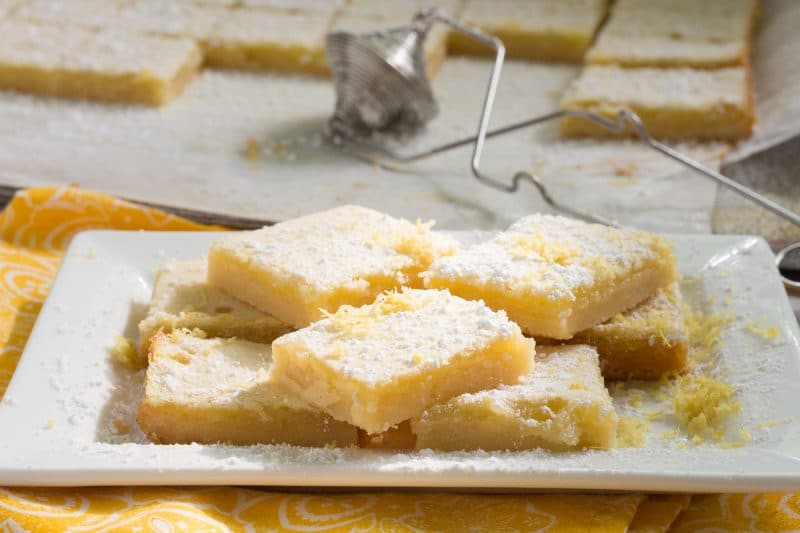
These lemon squares have the perfect amount of lemon to shortbread ratio. Not too sweet, not too tart.
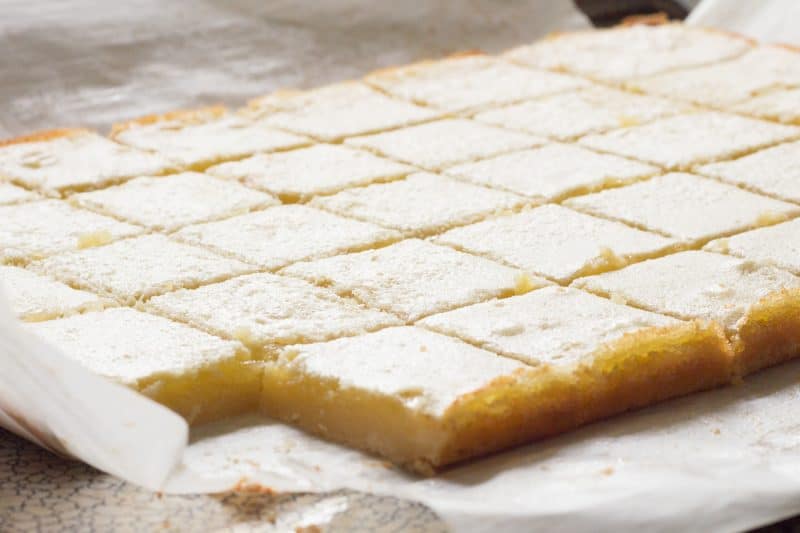
THICK OR THIN
I don’t like mine thick and gooey. I like to be able to hold it like a cookie rather than eat it with a fork.
I want to be able to pack them into the crew’s lunches without fear of them turning into a smooshed mess. I am sure that personal preferences are all over the board on this topic.
If you want a thicker cookie layer, just increase the shortbread crust ingredients by 50% more and add 5 to 10 minutes to the first baking time.
I would not recommend a thinner crust than this one though, the filling will ooze out the bottom during baking.
It is already fairly thin. Instead, Increase the amount of the topping by 50% or double it. and increase the second baking time by at least 8 minutes.
Bake until the center is no longer jiggly when gently shaking the baking pan.
FORMING AN EVEN CRUST
I find the best way to get this crust evenly formed is to use the bottom of a measuring cup.
Crumble the crust as evenly as possible over the bottom of a prepared pan and gently press the measuring cup over the crust.
You may need to use your fingers for the corners.
If the measuring cup sticks to the crust, just dip the bottom of the cup into some flour.
DIFFERENT BAKING TEMPERATURES
You will notice that there are 2 different baking temperatures listed. This is not a mistake.
The Crust
The crust needs to be cooked separately at a higher temperature to make sure it is sturdy enough to hold the lemon filling without absorbing any of it.
If the crust baked separately were at a lower temperature, it will brown the edges before the center is set.
The Lemon Layer
At 375 degrees F, the middle will set without burning the edges.
The filling is baked at a lower temperature to avoid browning the entire top.
You can try and change the temperature of one or the other, but I do not guarantee the success of this recipe with those changes.
I have had bad experiences on both ends when I have forgotten to reduce the temperature or got lazy and just set it to 350 degrees F from the outset.

ARE THEY DONE?
You will know that they are done when the middle does not jiggle and you begin to see some brown spots. Like the photo above.
Would you like to save this?
ADDING POWDERED SUGAR TO THE TOP
These taste great even without sprinkling powdered sugar on top.
I only add it because most people kind of expect to see it and it hides those few brown spots on top.
Do not add the powdered sugar until they are completely cooled.
Otherwise, it will melt into the bars and it will become a sticky mess.
I use a flour duster to get an even layer. If I can’t find my duster, I have been known to use one of my smaller steel strainers, just dump it in and gently tap the sides to get a nice sprinkling of powdered sugar.
LEMON ZEST
Lemon zest on the top is not a necessary addition either. It does, however, give an extra lemon zip. Always use fresh lemon zest for topping on baked goods.
You can use a microplane or a zester for making lemon zest.
If you use a grater much larger than a zester/grater, you run the risk of getting lemon pith mixed in with the zest. Lemon pith is bitter and will ruin a dessert.
One of my first kitchen disasters was using a food processor to “grate” my lemons. I was too young to know that zest was bitter.
To this day I don’t eat lemon meringue pie because I can still taste that ruined dessert when I think about it.
HOW TO SERVE
As with all lemon desserts, this one is good with hot coffee and tea.
It is perfect for an afternoon snack at work, or an after-school snack for kids.
I tend to serve these mostly during the spring and summer, but lemons are available year-round and I should probably make them more often in the fall and winter.
It might bring the flavor of summer to those dark winter days!
MORE EASY DESSERT RECIPES
Blueberry Streusel Mini Muffins
Large Batch Chocolate Chip Cookie Bars
Salted Peanut Marshmallow Bars
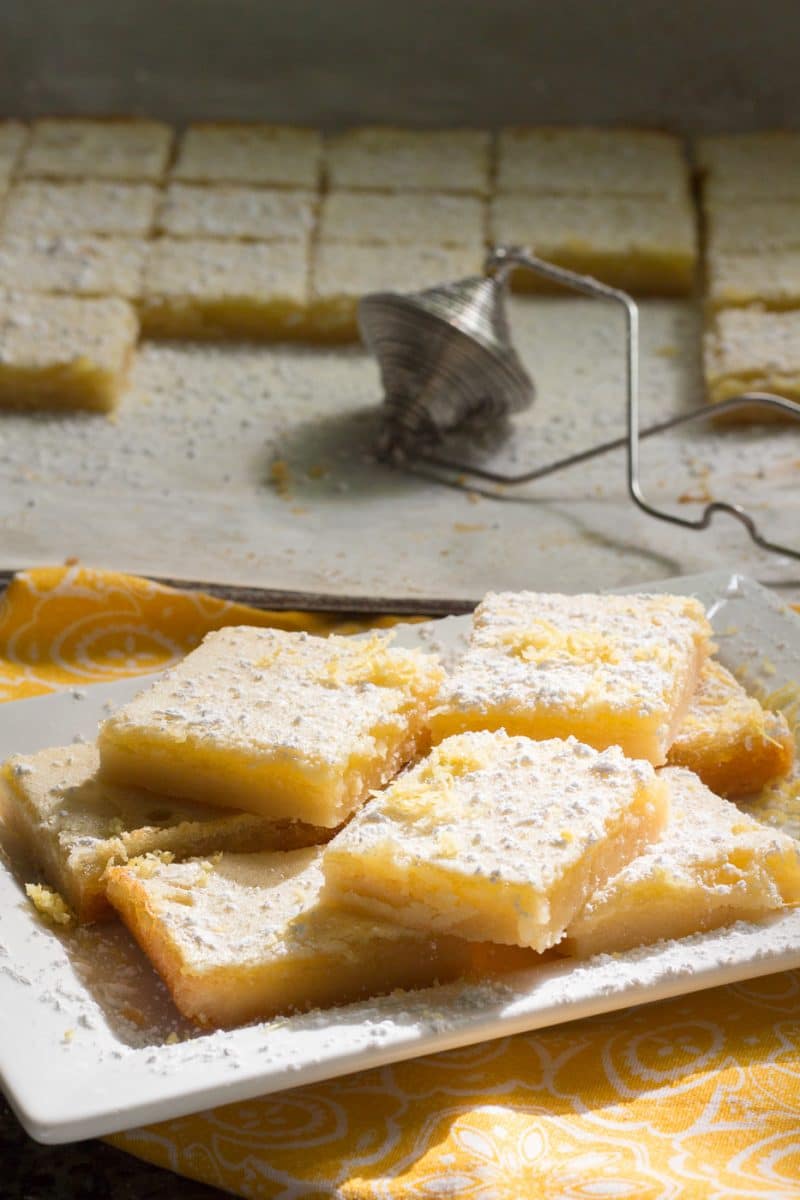
FOLLOW US ON SOCIAL MEDIA AND SHARE THIS RECIPE
SIGN UP TO RECEIVE NOTIFICATIONS AND NEVER MISS A NEW POST
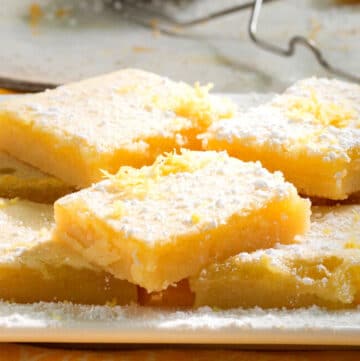
Best Lemon Bars with Shortbread Crust
Ingredients
Shortbread Crust
- 1 cup salted butter softened
- 2/3 cup granulated sugar
- 2 cups all-purpose flour
Lemon Filling
- 3 eggs
- 1 1/2 cups granulated sugar
- 1/4 cup all-purpose flour
- 1/3 cup fresh lemon juice
- 1 tablespoon lemon zest
Instructions
Shortbread Crust
- Preheat oven to 375 Degrees F.
- Prepare a 9 X 13 cake pan by spraying with baking spray. Alternatively, line the baking pan with parchment paper then cover with baking spray.
- Combine all shortbread crust ingredients in a small bowl. Using a pastry cutter, 2 butter knives, or fingers, mix until crumbly.
- Sprinkle crumbs evenly in cake pan.
- Using the bottom of a cup, or a measuring cup, pat down the crumbs until they are even and smooth.
- Place cake pan into preheated oven and bake for 20 to 25 minutes or just until the edges of the shortbread crust are beginning to brown.
- Remove from oven and reduce temperature to 350 Degree F.
Lemon Filling
- In a bowl, mix eggs and sugar until well combined.
- Add flour and mix until there are no lumps.
- Add lemon juice and lemon zest, mix until well blended.
- Pour over top of warm to the hot crust.
- Place into 350 Degree F oven.
- Bake for 18 to 22 minutes or until topping no longer looks wet.
- Remove from oven.
- Allow lemon bars to cool for at least 30 minutes.
- Place into refrigerator until the bars are completely cooled and set, about an hour.
- Once set and cooled, cut into desired size and shape.
Notes
Nutrition
Nutrition information is automatically calculated and may vary based on exact ingredients used. For accuracy, consult a registered dietitian or nutritionist.
Would you like to save this?
Elizabeth (Beth) Mueller
Elizabeth (Beth) Mueller is a food journalist, CEO of Pear Tree Kitchen, and co-creator of Food Blogger Help. She also has a bachelor’s degree in philosophy and a registered nurse licensed in the State of Oklahoma. When she has free time between writing, blogging, and cooking, she can be found volunteering as an RN with the Oklahoma Medical Reserve Corps.

